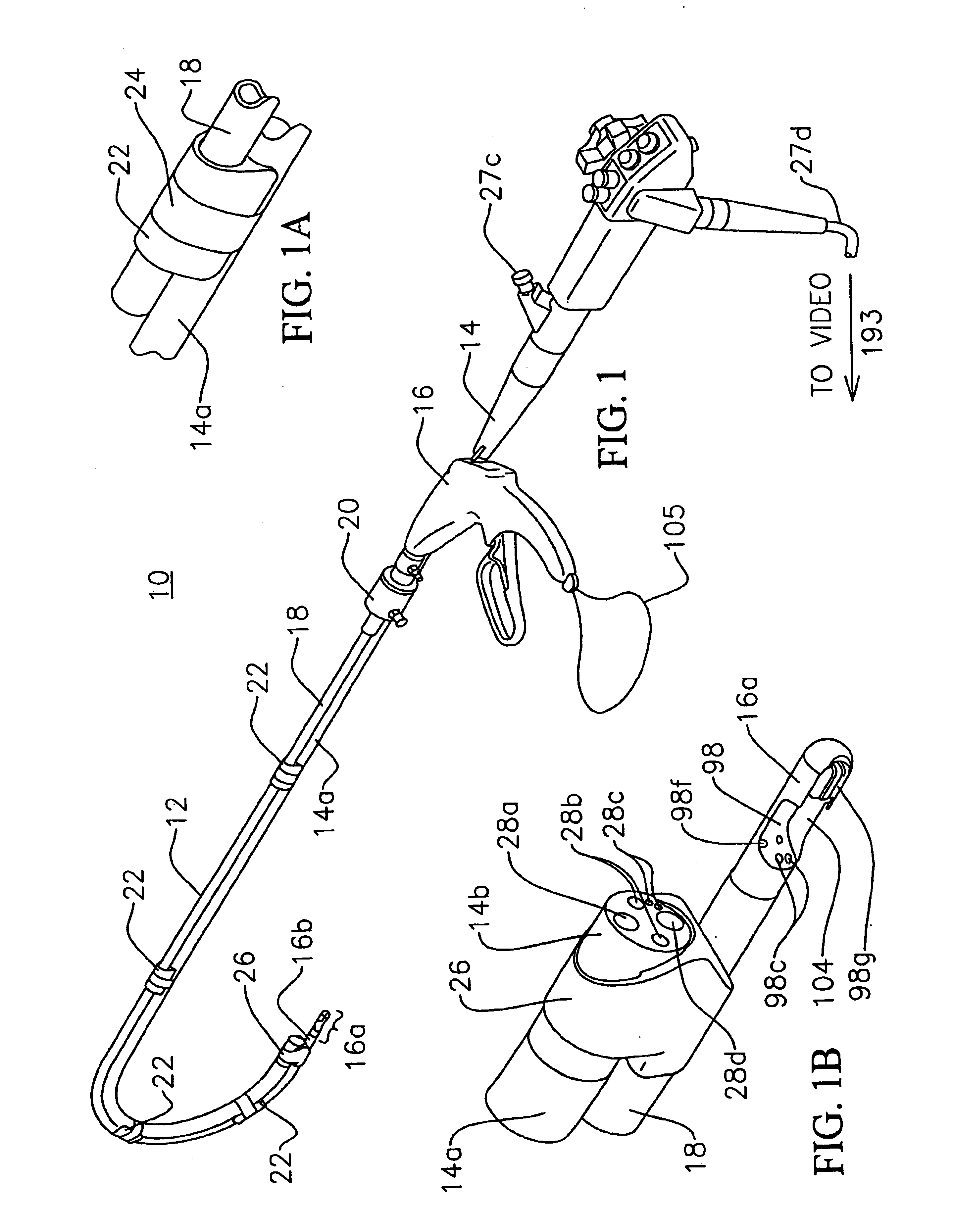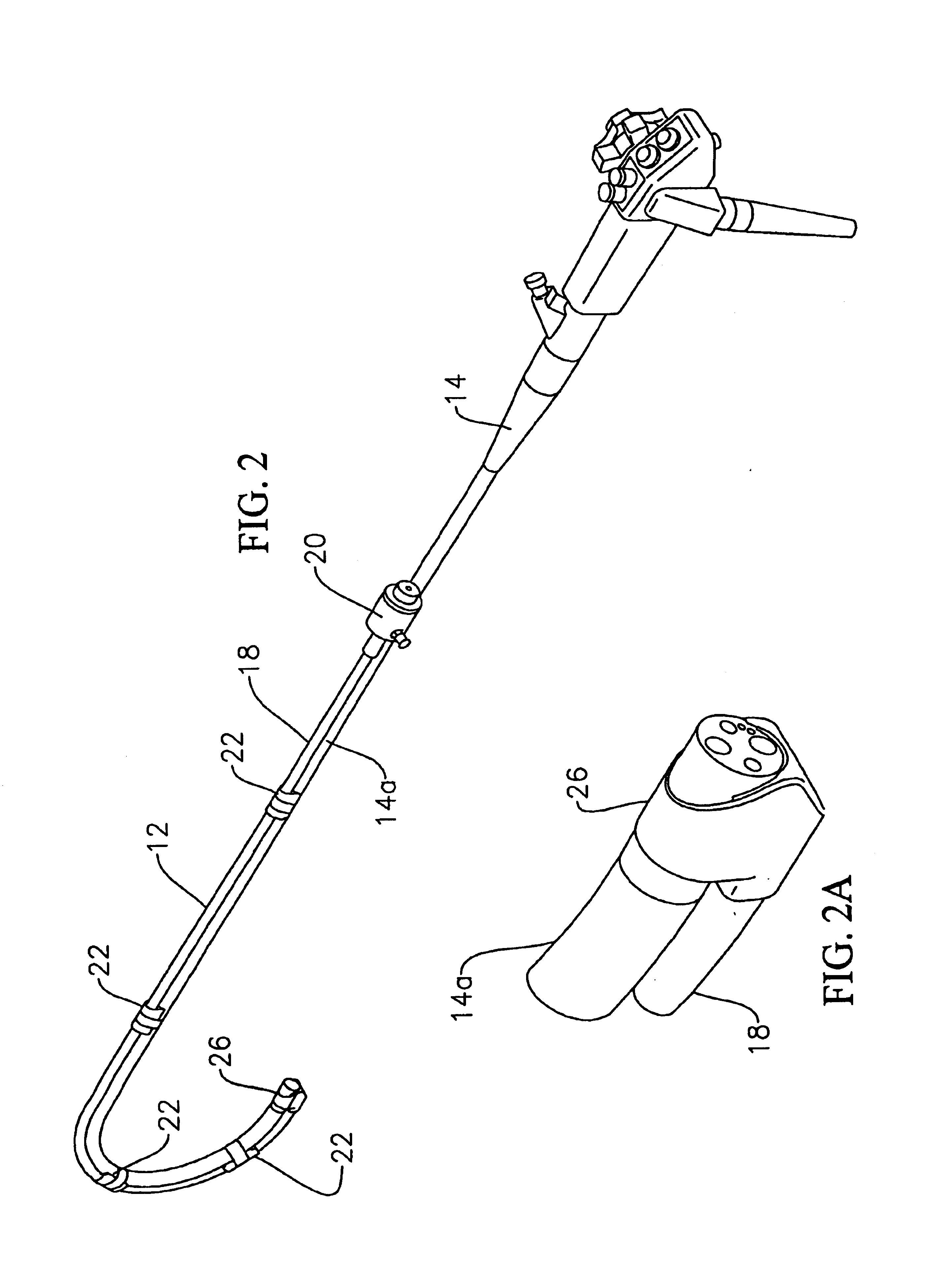System for endoscopic suturing
a technology of endoscope and suture, applied in the field of systems, can solve the problems of multiple passes of endoscope, long patient recovery period, and insufficient suture size or size to be able to apply sutures in tissue, and achieve the effect of limiting the functionality of endoscop
- Summary
- Abstract
- Description
- Claims
- Application Information
AI Technical Summary
Benefits of technology
Problems solved by technology
Method used
Image
Examples
Embodiment Construction
[0102]Referring to FIG. 1, a system 10 for suturing is shown including an accessory tube 12 and an endoscope 14, referred to herein after as a gastroscope, or other type of flexible endoscope having a shaft 14a coupled to the accessory tube, and a suturing instrument 16. The suturing instrument 16 may be inserted in the accessory tube 12 as shown in FIG. 1, and is removable from the accessory tube 12 as shown in FIG. 2. The accessory tube 12 has access tubing 18 which is sufficiently flexible to be movable with the flexible shaft 14a of the gastroscope. Tubing 18 is braid reinforced with a braid of stainless steel, nylon, or Kevlar, to maintain the integrity of the tubing's circular cross-sectional shape and avoid kinking as the shaft 14a of the gastroscope bends when placed through the mouth into the gastrointestinal tract of a patient. The braiding may be located between two layers of tubing 18, which are integrated with the braiding during their extrusion forming tubing 18. For e...
PUM
 Login to View More
Login to View More Abstract
Description
Claims
Application Information
 Login to View More
Login to View More - R&D
- Intellectual Property
- Life Sciences
- Materials
- Tech Scout
- Unparalleled Data Quality
- Higher Quality Content
- 60% Fewer Hallucinations
Browse by: Latest US Patents, China's latest patents, Technical Efficacy Thesaurus, Application Domain, Technology Topic, Popular Technical Reports.
© 2025 PatSnap. All rights reserved.Legal|Privacy policy|Modern Slavery Act Transparency Statement|Sitemap|About US| Contact US: help@patsnap.com



